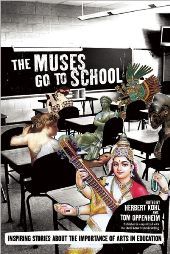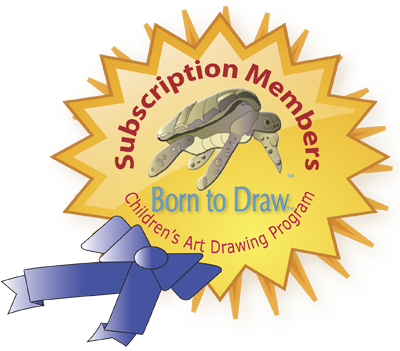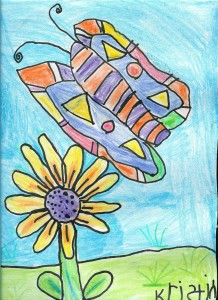Making Time for Art: The Muses Go to School
By Alicia Eames, Curriculum Connections–School Library Journal
Many public schools today devote large blocks of time each day solely to math and literacy. Whatever the reason—No Child Left Behind mandates, adoption of the Common Core State Standards, and increased emphasis on standardized testing—other essential subjects including social studies and science are often squeezed into a few precious time slots each week, if at all. So, where does that leave arts education?
Muses go to School(Original Import)In The Muses Go to School: Inspiring Stories About the Importance of Arts in Education (The New Press, 2012), editors Herbert Kohl, an education reformer (and former public school student), and Tom Oppenheim, the Artistic Director and President of the Stella Adler Studio of Acting, speak to the value of time spent immersed in the arts by joining 10 “autobiographical pieces by well-known artists and performers” with responses by educators. Pairings include David Amram, a composer and musician, and Gary Stager, a leader in laptop use in education; Bill T. Jones, a choreographer and dancer, and Kevin Truitt, an Associate Superintendent at San Francisco Unified School District; and director and playwright, Moisés Kaufman, and Steve Seidel, Director of the Arts in Education program at the Harvard Graduate School of Education.
Rosie Perez is the first performer to make an appearance in the book, and in her essay, “Tears in the Dark,” she crafts a case for arts education and teacher sensitivity as she recalls being forced to “play air clarinet” because she couldn’t afford a musical instrument. The actress also talks about her work with the Urban Arts Partnership and shares moving accounts of at-risk or troubled youth and the positive influence participation in the arts has had on their lives. Michelle Fine, a Distinguished Professor of Psychology at the Graduate Center of the City University of New York, responds to Ms. Perez’s essay with a letter, in which she reflects on the struggle to find her voice in a world that was often less than encouraging. Fine also describes her work with urban teens and the power of incorporating art experiences.
Performers Phylicia Rashad, who “grew up in Houston, Texas, in a time of legal segregation,” and Whoopi Goldberg, who was raised in New York City, remember childhood opportunities for artistic expression and development from band to theater, which don’t exist for all public school students today. Diane Ravitch, Research Professor of Education at New York University and an education historian, cites funding statistics (specifically in New York City) that reflect the huge financial hit arts education has taken in recent years as “hundreds of millions of dollars” were spent on testing and accountability.
While most large cities have programs that allow art-starved kids who can’t afford privately funded lessons and experiences to fuel their talents, like New York’s Urban Arts Partnership and the Outreach Division of the Stella Adler Studio of Acting, the essay contributors feel strongly that public schools everywhere ought to find a way back to supporting arts education. Educators and parents can use these essays to open discussion about meeting the needs of all students and setting priorities for the allocation of resources in their schools.









Leave a Reply
Want to join the discussion?Feel free to contribute!